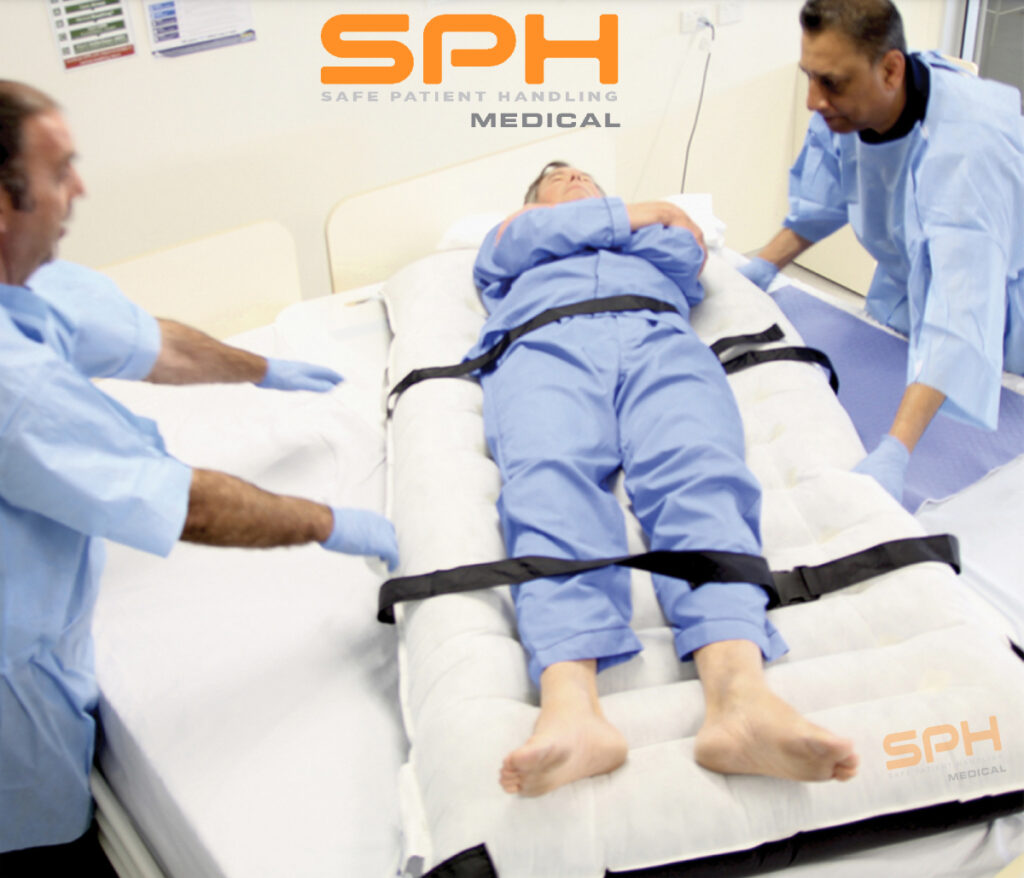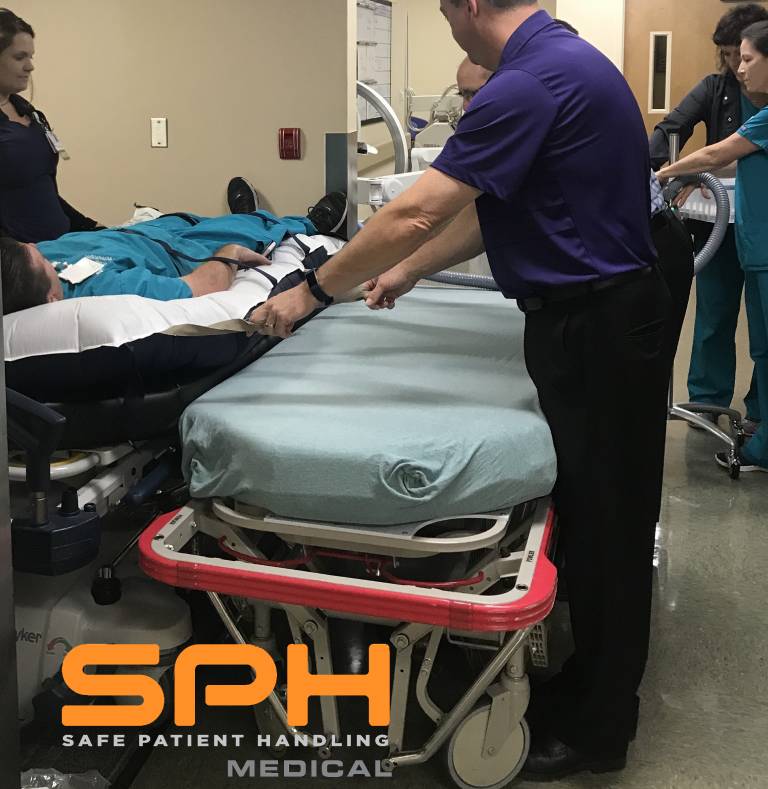The Risks of Repositioning a Patient
Caregivers and medical professionals perform countless lateral transfers per day. This procedure is best described as repositioning a patient from one surface to another. With the uncertainty of lateral transfers, both nurses and patients become vulnerable to handling injuries. Whether a patient’s in the ICU or being taken to surgery, several departments are responsible for conducting lateral transfers. With that said, the potential for a nursing injury or repositioning injury to occur increases significantly. Patients that require total care are even more susceptible to these injuries.
Typically, nurses move patients from one position to the next using the sheet underneath them. However, if there’s limited staffing, a plastic board is used to facilitate the process. Though this alternative can ease the physical effort required, it’s not a foolproof plan. In fact, it doesn’t reduce enough friction to compensate for the lack of human resources, resulting in precarious and often dangerous affairs. Simply put, when nurses reposition a patient, the success of a lateral transfer is contingent upon their combined strength and communication.
Unfortunately, these ineffective solutions predispose medical professionals to musculoskeletal disorders. Studies show that healthcare workers are 31 percent more likely to endure musculoskeletal pain caused by handling injuries. In addition to being debilitating, these injuries can also cost hospitals a pretty penny. Depending on the extent of the claim, hospitals may have to cover hundreds of thousands of dollars in injury costs.
To shed light on how unreliable these practices are, the Bureau of Labor Statistics conducted a study on safe patient handling programs. Their findings concluded that hospitals that implement secure lateral transfer procedures are 73 percent less likely to experience nursing or repositioning injuries. Using this information, the House introduced the Nurse and Health Care Worker Protection Act in 2015. In essence, this bill states that the Department of Labor is required to protect medical professionals from musculoskeletal disorders by improving mobility, patient handling, and injury prevention standards.
How Lateral Transfers Repositioning Risks Are Being Solved
With the growing prevalence of handling-related injuries, air-assisted transfer systems were developed. At the forefront of these developments was AirPal. This company is touted as the first to introduce air-assisted transfer systems, and their invention inspired others to follow suit. HoverMatt, for instance, offers air transfer systems that breathe security and physical ease into repositioning patients.
In addition to reducing friction, these systems also provide much-needed support. With these added elements, less manpower is required to oversee a safe lateral transfer. It also makes it easier for nurses to boost patients up in bed. To promote patient and staff safety, we at SPH Medical implement these cutting-edge systems into hospitals.
Why Choose Assisted Lateral Transfers Equipment?
With its vast benefits, more caregivers and hospitals are opting for this modern equipment. Most notably, air-assisted transfer systems eliminate handling risks, but they also provide a more comfortable experience for the patient. In other words, with air-assisted transfer equipment, patients don’t have to endure any discomfort. Traditional lateral transfers are often accompanied by unease and difficulty. With this savvy technology, a smooth transition is promised from one surface to the next.
With assistance from air transfer systems, patients say they feel as if they’re floating. Above all else, air-assisted transfer systems streamline repositioning matters, making the patient feel like less of a burden. When multiple hands are required to carry out this task, it can make the patient uncomfortable and self-conscious. Fortunately, air-assisted equipment brings patients great peace of mind, allowing them to receive optimal in-home or hospital care.

